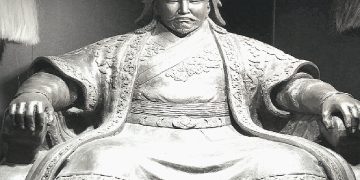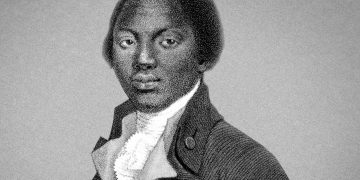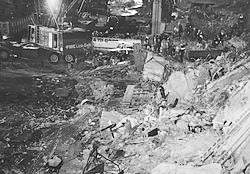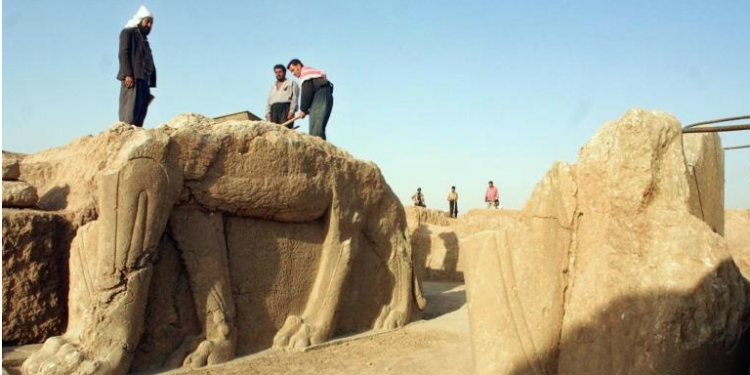The ruins of several ancient cities were destroyed by members of the Islamic State terrorist group.
In early March 2015, local residents heard a series of explosions, which likely marked the end of the 3rd century AD city of Hatra. BC. and located 110 kilometers south of the Iraqi city of Mosul. The remains of the city were filled with sculptures and works of stone architecture.
Over the past few weeks, ISIS has been attacking ancient archaeological sites, wiping artifacts off the face of the earth with sledgehammers and hammers, and sometimes bulldozers and explosives. In addition to Hatra, the destroyed monuments included the Mosul Museum, as well as the ancient Assyrian capitals of Nineveh, Nimrud and Dur-Sharrukin, famous for their huge statues of the shedu, guardian deities in the form of winged bulls with human heads.
Archaeologists are trying to assess the degree of damage to ancient monuments and suggest that the next victim of the militants will be the ancient capital of Assyria – the city of Ashur and its 4,500-year-old temple, built in honor of the Assyrian god of war.
The city of Nimrud (ancient name – Kalhu, in the Bible referred to as Kalah) stretches along the eastern bank of the Tigris River, 30 kilometers south of Mosul. The city was founded around 1400 BC, and at the beginning of the IX century. BC. King Ashur-Nazir-Apal II made it the new capital of Assyria, surrounded it with a long fortress wall and erected a ziggurat tower, new temples and a large palace.
The stone panels of the structures were covered with intricate carvings and reliefs depicting military campaigns, ritual rituals and sacred mystical genius figures. In the years 1845-1851. The city was excavated by Austin Henry Layard, a British politician and historian. From 1958 to 1962 David Oates, a Cambridge University scientist, studied the palace built by Shalmaneser III.
Since 1980, for a decade, Iraqi archaeologists have worked on this site and made outstanding discoveries. They discovered, in particular, the tomb of the queen of Assyria, which was filled with items made of gold and ivory. It is obvious that the significance of the destroyed values for Eastern and world cultures is very great.
The unprecedented wave of IS destruction sparked a protest march in Washington, DC, and angered archaeologists and museum workers around the world. UN officials said the events could amount to a war crime.
“The goal of these barbaric, criminal acts of terrorism is to destroy the heritage of humanity and the civilization of Iraq,” said Prime Minister Haider al-Abadi.
Experts believe that the losses are serious, since the area in northern Iraq has been closed for study for many years – since the beginning of the first Gulf War in 1991. Scientific research on the heritage of Assyria is far from complete, for example, many Nimrud inscriptions were never decrypted.
“Millennia of history have been shattered by the hammers of ignorance,” said Abdulameer Al-Dafar Hamdani, an archaeologist at Stony Brook University in New York. “With every monument destroyed, history is forgotten.”
“We hope that at least some grains of the heritage of Mesopotamian civilization can be saved and restored,” wrote representatives of the Eastern Center at the University of Chicago. “We express our deepest condolences to the families of people suffering in northern Iraq and Syria, and we offer our all possible support to Iraqi experts involved in the study and preservation of the archaeological heritage of Iraq,” they say. Without the past, we will not be able to understand our present, and without understanding the present, we cannot plan the future, ”historians note.
ISIS representatives, in turn, said that images of living creatures on statues and reliefs are prohibited for Muslims, especially for Sunnis. “Our prophet ordered us to demolish and destroy idols,” an unidentified Islamic State official said in a video that was widely circulated earlier this month. In the video, you can see how men pull the ancient statues from the pedestals, then smash their remains with sledgehammers and destroy the faces of the shedu with electric drills.
Independent Iraqi archaeological heritage scholar Lamia al-Gailani Werr, based in London, said 26 of the 30 statues in the Hatra Hall in the Mosul Museum were originals from the heyday of the ancient city at the beginning of our era. and in the halls of Nineveh and Nimrud, 21 of the 24 Assyrian reliefs and statues were originals.
However, some artifacts were preserved by jihadists. They are used for subsequent sale. According to organizations that track the illicit antiquity trade, the sale of cultural property is one of the sources of IS’s income. Irina Bokova, UN head of education, science and culture, confirmed that analysis of the images showed that the statues from Nineveh were transported in large trucks, most likely for subsequent sale. But still, most of the heritage of ancient Assyria has been reduced to ruins.
“Jihadists say that depicting a living creature is haraam, but they do not hesitate to use statues for financial gain,” said Iraqi Minister of Tourism and Archaeological Heritage Adel Fahad al-Shershab.
Images of American satellites will help assess the damage caused by the jihadists to the cultural heritage of Mesopotamia. The US State Department has asked for new satellite imagery that will also help track trucks leaving Nimrud and locate stolen artifacts. Perhaps someday it will be possible to return or at least outbid some of the cultural monuments.












